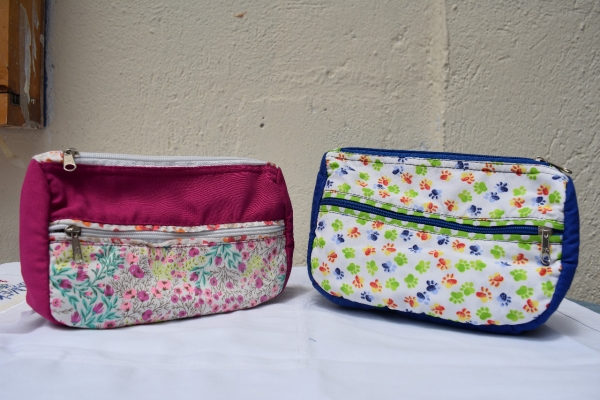Latest from Super User
1171879 comments
-
Comment Link
 Miércoles, 30 Julio 2025 13:10
posted by مراحل انجام خودارزیابی پروژه مهر توسط مدیران مدارس
Miércoles, 30 Julio 2025 13:10
posted by مراحل انجام خودارزیابی پروژه مهر توسط مدیران مدارس
Hi! I've been following your weblog for a long time now and finally got the courage to go ahead and give you a shout out from Houston Texas!
Just wanted to say keep up the excellent job! -
Comment Link
 Miércoles, 30 Julio 2025 13:09
posted by remove invalid emails from list India
Miércoles, 30 Julio 2025 13:09
posted by remove invalid emails from list India
You really make it seem so easy with your presentation however I in finding this matter to be really something that I believe I would never understand.
It sort of feels too complicated and very wide for me.
I am taking a look forward for your subsequent put up, I'll attempt to get the dangle of it! -
Comment Link
 Miércoles, 30 Julio 2025 13:07
posted by ドール えろ
Miércoles, 30 Julio 2025 13:07
posted by ドール えろ
[url="https://www.jp-dolls.com/blog/45.html"]女性 用 ラブドール[/url].. Oh,how lovely! Come here.
-
Comment Link
 Miércoles, 30 Julio 2025 13:02
posted by リアル ダッチワイフ
Miércoles, 30 Julio 2025 13:02
posted by リアル ダッチワイフ
[url="https://www.jp-dolls.com/"]エロ い ラブドール[/url]The character of Iniquity,though fully identified with thebuffoon of the later plays,
-
Comment Link
 Miércoles, 30 Julio 2025 13:01
posted by https://www.korsosanockie.pl
Miércoles, 30 Julio 2025 13:01
posted by https://www.korsosanockie.pl
You're a really beneficial website; couldn't make it without ya!
https://www.korsosanockie.pl -
Comment Link
 Miércoles, 30 Julio 2025 13:01
posted by RichardRox
Miércoles, 30 Julio 2025 13:01
posted by RichardRox
It all started back in March, when dozens of surfers at beaches outside Gulf St Vincent, about an hour south of state capital Adelaide, reported experiencing a sore throat, dry cough and blurred vision after emerging from the sea.
tripscan войти
Shortly after, a mysterious yellow foam appeared in the surf. Then, dead marine animals started washing up.
Scientists at the University of Technology Sydney soon confirmed the culprit: a buildup of a tiny planktonic algae called Karenia mikimotoi. And it was spreading.
https://trip-scan.org
трипскан сайт
In early May, the government of Kangaroo Island, a popular eco-tourism destination, said the algal bloom had reached its coastline. A storm at the end of May pushed the algae down the coast into the Coorong lagoon. By July, it had reached the beaches of Adelaide.
Diverse algae are essential to healthy marine ecosystems, converting carbon dioxide into oxygen and benefiting organisms all the way up the food chain, from sea sponges and crabs to whales.
But too much of one specific type of algae can be toxic, causing a harmful algal bloom, also sometimes known as a red tide.
While Karenia mikimotoi does not cause long-term harm to humans, it can damage the gills of fish and shellfish, preventing them from breathing. Algal blooms can also cause discoloration in the water and block sunlight from coming in, harming ecosystems.
The Great Southern Reef is a haven for “really unique” biodiversity, said Bennett, a researcher at the University of Tasmania, who coined the name for the interconnected reef system which spans Australia’s south coast.
About 70% of the species that live there are endemic to the area, he said, meaning they are found nowhere else in the world.
“For these species, once they’re gone, they’re gone.” -
Comment Link
 Miércoles, 30 Julio 2025 13:00
posted by Charles John Edwards
Miércoles, 30 Julio 2025 13:00
posted by Charles John Edwards
I’ll surely return to read more.
-
Comment Link
 Miércoles, 30 Julio 2025 13:00
posted by lean drops youtube
Miércoles, 30 Julio 2025 13:00
posted by lean drops youtube
Hi there it's me, I am also visiting this web site daily, this web page is genuinely fastidious
and the visitors are genuinely sharing good thoughts. -
Comment Link
 Miércoles, 30 Julio 2025 12:57
posted by wps官网下载
Miércoles, 30 Julio 2025 12:57
posted by wps官网下载
Wow, superb blog layout! How long have you been blogging for?
you made blogging look easy. The overall look of your web site is great, let
alone the content! -
Comment Link
 Miércoles, 30 Julio 2025 12:57
posted by expat internetaanbieder Hongarije
Miércoles, 30 Julio 2025 12:57
posted by expat internetaanbieder Hongarije
Valuable info. Fortunate me I discovered your website by chance, and I'm surprised why this twist of fate didn't took place earlier!
I bookmarked it.
Leave a comment
Make sure you enter all the required information, indicated by an asterisk (*). HTML code is not allowed.
SOBRE NOSOTROS
La Fundación Sol de Primavera es un espacio en el accionar del conocimiento de las/los niñas, adolescentes, jóvenes de 13 a 22 años... Leer más
INFORMACIÓN DE CONTACTO
-
(+593 2) 2282-589
-
fundacion@soldeprimavera.org
-
comunicacion@soldeprimavera.org
-
Colabora con nosotros

